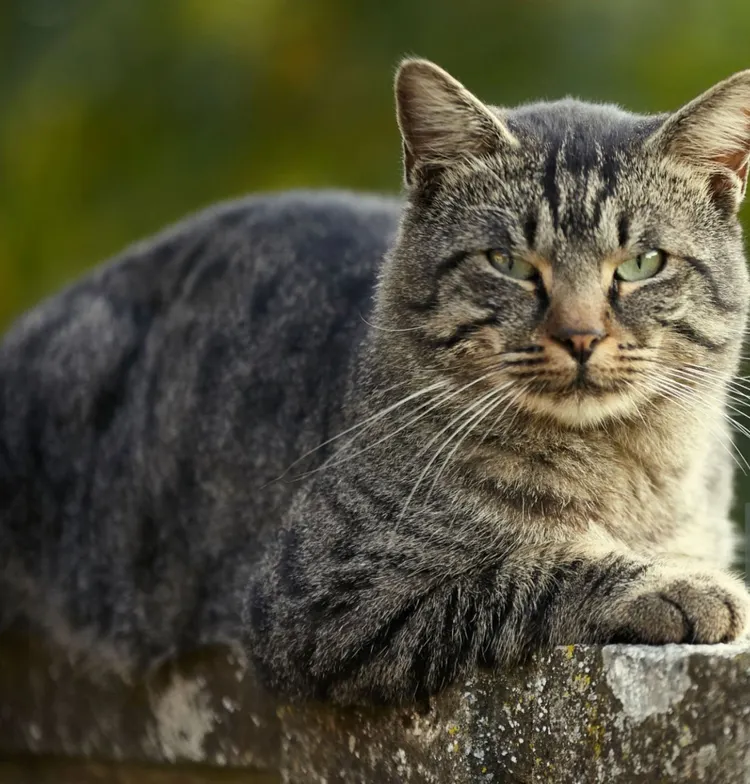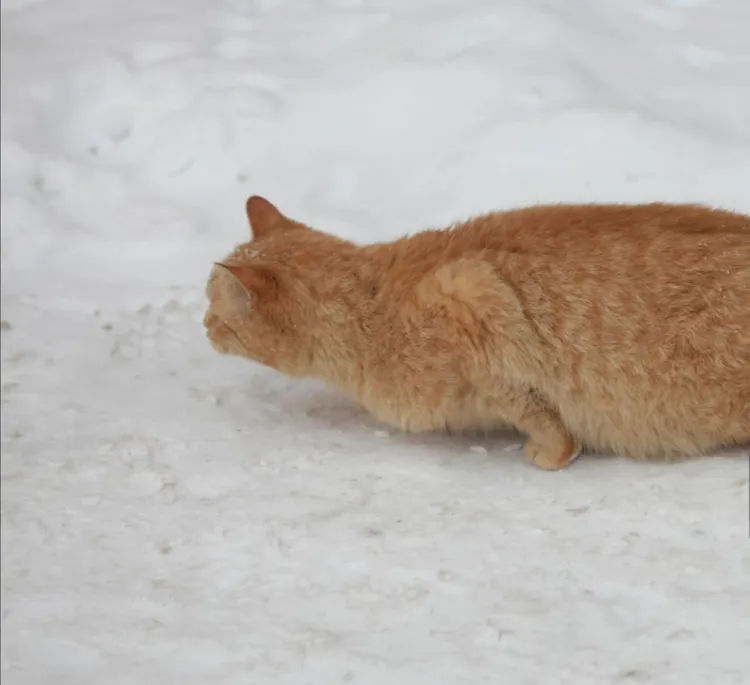Ever caught your cat crouching low to the ground, eyes wide, tail twitching, as if they’re preparing for a secret mission? This common yet intriguing feline behavior can mean many different things depending on the situation. Whether your cat is stalking an imaginary prey, feeling a bit defensive, or simply relaxing, crouching is a key part of their body language that helps us understand their thoughts and emotions.
In this post, we’ll explore the various reasons why cats crouch, how to interpret this behavior in different contexts, and how to ensure your furry friend stays healthy and happy in a supportive, eco-friendly environment.
Understanding Cat Body Language
Cats use a complex combination of body language, vocalizations, and behaviors to communicate with us and other animals. One of the most important forms of communication is posture. While the classic “crouch” is just one of many postures a cat can assume, it offers vital clues about how your feline is feeling.
Crouching is an instinctive behavior tied to a cat’s wild ancestors. Domestic cats, though they may live pampered indoor lives, still possess the hunting and survival instincts that once kept them alive in the wild. Crouching can signal different emotions, from excitement and playfulness to fear or discomfort, depending on the situation.
Let’s dive into the most common reasons cats crouch and what it might mean for your kitty.
Reasons Cats Crouch

1. Hunting Instincts: The Born Stalker
Cats are natural hunters, and their crouching posture is part of their hunting toolkit. Whether they’re stalking a real mouse or a jingly toy, cats will crouch low to the ground, flattening their bodies to minimize their profile and avoid detection. This behavior is not just for show—cats are ambush predators, and crouching allows them to get close to their prey before launching a surprise attack.
Even indoor cats that have never had to hunt for food will display this crouching behavior during play. It’s their instinct kicking in, allowing them to exercise their natural hunting skills in a safe environment.
How to recognize hunting crouch: In this position, your cat’s eyes will be wide and focused on the “target,” their body low to the ground, with their hindquarters often twitching in preparation to pounce.
2. Defense Mechanism: When Fear or Stress Takes Over
Crouching is not always playful—it can also be a sign that your cat feels threatened or stressed. If a cat perceives danger, they might crouch to make themselves smaller and less noticeable, signaling submission or preparing to flee or fight.
A defensive crouch is usually accompanied by other signs of stress or fear, such as flattened ears, dilated pupils, and a puffed-up tail. Cats in this state may also growl or hiss to warn off whatever is causing them distress.
How to recognize defensive crouch: A cat in a defensive crouch will be tense, with their ears pinned back and their body more rigid than when they’re in hunting mode. Their muscles will be coiled as if ready to spring into action.
3. Comfort and Relaxation: The “Just Chillin’” Crouch
Sometimes, a crouch is simply a comfortable way for a cat to rest while staying alert. Cats are notorious for being able to relax in strange positions, and crouching can be a sign that they’re in a halfway state between rest and readiness. In this relaxed crouch, the cat is not fully lying down but not tense or stressed either.
You’ll often see this kind of crouching when a cat is sitting in a sunny spot, watching the world go by. It’s a posture that says, “I’m relaxed, but I’m keeping an eye on things.”
How to recognize relaxed crouch: In a comfortable crouch, your cat’s body will be loose, and their eyes may be half-closed or calmly observing their surroundings. Their ears will be forward or gently relaxed, and there will be no signs of tension.
4. Illness or Discomfort: When Crouching Signals a Problem
While crouching is often normal behavior, it can also be a red flag if your cat suddenly starts crouching in unusual situations or maintains the posture for long periods. Cats often hide their pain, but crouching with a hunched back or appearing lethargic can be signs of discomfort or illness.
If your cat is crouching more than usual, especially if accompanied by other signs like a loss of appetite, lethargy, or vocalizations, it’s important to consult your vet. Common health issues that may cause crouching include gastrointestinal discomfort, urinary tract problems, or even arthritis in older cats.
How to recognize crouching due to illness: A cat crouching due to pain may have a hunched back, appear tense, and avoid movement. They may also vocalize when touched or show signs of distress like panting or hiding.
How to Interpret Your Cat’s Crouching in Different Contexts
Now that we’ve covered the main reasons cats crouch, let’s look at how to interpret crouching in different scenarios:
Playful Crouching
Cats often crouch in a playful way when engaging in games or mock-hunting sessions. You might notice your cat crouching low, tail twitching, as they prepare to pounce on a toy or even a fellow pet.
Signs of playful crouching:
- Tail flicking or twitching
- Eyes wide, pupils dilated
- Hindquarters wiggling in preparation to pounce
- Relaxed or excited demeanor
Fearful or Defensive Crouching
A defensive crouch is often a response to fear, stress, or perceived danger. If your cat feels threatened, they might crouch with their body tense, ready to flee or fight. This posture is often accompanied by vocalizations like growling or hissing, as well as defensive gestures such as swatting.
Signs of defensive crouching:
- Flattened ears
- Dilated pupils
- Tense, coiled body
- Growling, hissing, or swatting
Crouching Due to Pain or Illness
If your cat is crouching due to pain, you may notice them holding a tense or hunched posture, often with reluctance to move. Cats that are ill may also crouch in strange locations or for extended periods.
Signs of pain-related crouching:
- Hunched back
- Tension in the body
- Avoidance of movement
- Accompanied by other symptoms like vomiting or lethargy

Eco-Friendly Tips for Supporting a Healthy Cat Environment
Whether your cat is crouching due to playful hunting instincts or stress, it’s essential to provide a healthy, stimulating environment that keeps their mind and body active. Here are some eco-conscious ways to create a safe, comfortable home for your feline friend:
- Sustainable Cat Toys: Choose toys made from eco-friendly materials like natural fibers, hemp, or recycled materials. Look for products that are biodegradable or can be recycled at the end of their life.
- Eco-Friendly Bedding: Provide your cat with soft, comfortable bedding made from organic or sustainable materials like cotton or bamboo. This ensures a cozy spot to rest after a long day of stalking toys!
- Natural Calming Products: If your cat tends to crouch due to stress or anxiety, consider using natural calming products like lavender sprays or pheromone diffusers. These can help create a more relaxed environment without relying on harsh chemicals.
When to Seek Veterinary Advice
If your cat’s crouching behavior seems out of the ordinary or is accompanied by other symptoms, it’s important to seek veterinary advice. Persistent crouching could indicate underlying health issues such as:
- Arthritis: Older cats may crouch more frequently due to joint pain and stiffness.
- Gastrointestinal Issues: Cats experiencing stomach discomfort or bloating may crouch to relieve pain.
- Urinary Tract Infections: Cats with urinary issues may crouch near the litter box or appear tense when trying to urinate.
Your vet can help diagnose any potential issues and offer guidance on treatment.
Conclusion
Crouching is one of the many fascinating behaviors that cats exhibit, and it can tell us a lot about how they’re feeling. Whether your cat is crouching because they’re in playful hunting mode, feeling stressed, or simply trying to relax, understanding their body language helps deepen your connection with them.
By paying attention to your cat’s posture and offering them a safe, eco-friendly environment, you can help them stay happy, healthy, and ready for whatever adventure—or nap—comes next.



